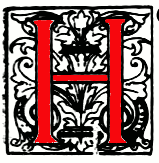
arold Hume Piffard, born in Marylebone, London, on 10 August 1867, was the sixth son of Charles Piffard (4 July 1829 – 2 July 1884) and his wife Emily, née Hume (1837 – 1911); she was the daughter of James Hume, a barrister and Magistrate at Calcutta. Charles was the Clerk of the Crown in the High Court of Calcutta. H. H. Piffard's four older brothers were, unlike him, all born in India. He was educated at Lancing College, in Sussex's Adur Valley, where he had gone with his older brother, Lawrence Grahame Woodroffe (born in 1865), in September 1877. Both left the school in July 1888.
"Piff" as he was known to his schoolmates, entered ancing at the age of ten. He often acted the class clown, for example, performing an aboriginal "war dance" on the railway bridge at the nearby Beeding Cement Works in front of an oncoming locomotive before diving into the river below. Not surprisingly, he was remembered by his classmates for his involvement in the school's theatrical productions. However, the Piffard who became a touring actor was his brother Hamilton Adrian Balfour (1862 - 1927). In 1889, H. H. Piffard himselk took up the formal study of art at the Royal Academy Schools, and exhibited his first painting at the Royal Academy in 1895.
Piffard's career as a painter was assured when he exhibited four large-scale oil canvasses on historical subjects at the Royal Academy from 1895 to 1899, beginning with The Last of the Garrison (6 May through 5 August, 1895). His other entries likewise realised events in the Napoleonic wars. His most famous large-scale historical canvas, Saragossa 10 February 1809, dramatically (one might even say, sensationally) depicts Napoleon's forces brutally putting down the resistance of Spanish patriots inside the cathedral of Zaragoza during the Peninsular War: "gun smoke fills the interior of the church as French soldiers trample Spanish monks to the floor" (The Knohl Collection).
Piffard then developed his artistic career in novel directions, as he moved from being a military artist to a book and magazine illustrator and then to an aviation pioneer. As a source of additional income after establishing himself as a painter, he illustrated such periodicals as The Strand Magazine beginning in April 1894, The Illustrated London News, and The Pictorial Magazine. At the age of twenty-eight he began to illustrate books for three publishers: Tower, C. Arthur Pearson, and S. W. Partridge, eventually illustrating over a hundred novels by such authors as George Eliot, Charles Dickens, Richard Marsh, Max Pemberton, and Guy Boothby. Between 1902 and 1912 he illustrated nearly seventy books for the Society for Promoting Christian Knowledge. In 1908 he began working for Collins of London and Glasgow, illustrating their reprints of such classic novels as Thackeray's The Virginians, Vanity Fair, and Christmas Books, as well as Dickens's Mystery of Edwin Drood, and George Eliot's Felix Holt, the Radical. He developed a socialist realistic strain in illustrating Robert Harborough Sherard's The White Slaves of England, Being True Pictures of Certain Social Conditions in the Kingdom of England in the year 1897, published by James Bowden that same year. The most memorable piece is the gruesome frontispiece Done to Death, which depicts the body of a nineteen-year-old inmate of the Newcastle Workhouse who died of lead poisoning.
Besides being a painter and commercial artist, he was much interested in aviation. While at his studio in Bedford Park in London, he began in 1907 to make model aircraft, receiving a prize for one of them at the Olympia in 1909. In the Lancing College Magazine (1910), H. H. Piffard was noted as an alumnus famous not in the arts but in the history of aviation. He wheeled around the airfield at the Shoreham-by-Sea aerodrome, but crashed his forty-horse-power aircraft The Hummingbird in June of that year after he overstressed the landing gear, damaging the hand-carved wooden propeller. His crashing again that October rendered the plane inoperable. In September of 1910 he actually got a plane off the ground, and flew up to a height of forty feet for about half a mile. In 1911, he unsuccessfully tested yet another new aircraft, the Piffard Hydroplane, but this proved to be his last attempt at flying.
After that near-fatal accident, Piffard turned his attention once again to war painting at the outbreak of the First World War, notably The Real Angel of Mons (1916), Daddy's Away, and Daddy Returns. His most famous celebration of the heroism of British forces in the trenches of the the Great War is the much-circulated colour lithograph The Thin Red Line. In 1917, among his few book illustrations were contributions to Canada in Khaki. After 1920 his work rarely appeared in books and periodicals. Although his grave marker in Old Chiswick Cemetery, London, bears the date "1938," he in fact died at Lambeth on 17 January 1939. He was pointedly not a satirist and political cartoonist in the manner of French illustrator Caran d'Ache (Emmanuel Poiré), despite Simon Houfe's assertion.
Bibliography
Davis, Linda. "Biographical Note on Harold Hume Piffard (1867-1938)." https://www.findagrave.com/memorial/22086/harold-hume-piffa
Dickens, Charles. The Mystery of Edwin Drood and Other Stories, illustrated by Harold Hume Piffard. No. 330. London & Glasgow: Collins' Clear-Type Press, circa 1904.
"Harold Hume Piffard (British, 1867 – 1938): Saragossa 10 February 1809, oil on canvas, signed, 54″ x 36″." The Knohl Collection. https://www.theknohlcollection.com/portfolio/detail/death-at-saragossa-2/
Houfe, Simon. "Harold Hume Piffard." Dictionary of British Book Illustrators and Caricaturists, 1800 - 1914. Woodbridge: Antique Collectors' Club, 1978. P. 416.
Kirkpatrick, Robert J. "Harold Piffard." Bear Alley Blogspot. 8 September 2018. https://www.bearalley.blogspot.com/2018/09/harold-piffard.html
Wolfeeboys Blog. "A Brief History of Aviation at Shoreham. Part One - Harold Hume Piffard." 08-06-2017. Wolfeeboy.Wordpress.com. https://wolfeeboy.wordpress.com/2017/06/08/harold-hume-piffard-a-brief-history-of-aviation-at-shoreham-part-one/
Created 1 July 2022